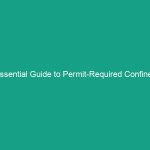Good Morning Team!
Today, we’re going to discuss an essential aspect of our Workplace Safety: essential pulling techniques. Understanding these techniques not only enhances our Safety protocols but also significantly reduces the risks associated with pulling tasks. It’s crucial for everyone to be aware of how to perform these tasks safely to protect ourselves and our colleagues.
Understanding Essential Pulling Techniques
Essential pulling techniques refer to the methods and practices used when pulling heavy objects in a workplace setting. These techniques are fundamental in ensuring that employees perform their duties without placing themselves in harm’s way. A common misconception is that pulling is a straightforward action; however, improper techniques can lead to serious injuries, such as muscle strains, sprains, and even severe back injuries.
Key Hazards, Risks, and Safety Considerations
When it comes to pulling tasks, several Hazards can arise:
- Overexertion: Lifting or pulling heavy loads can strain muscles and joints.
- Improper Posture: Bending or twisting while pulling can lead to back injuries.
- Slips and Falls: Uneven surfaces can cause accidents when pulling heavy items.
- Inadequate Grip: Losing grip on an object can lead to it falling, causing injury to yourself or others.
Ignoring safety protocols can result in real-world consequences, including lost workdays, medical expenses, and decreased productivity. It’s essential to recognize these risks and actively work to mitigate them.
Best Practices, Procedures, & Actionable Advice
To perform pulling tasks safely, follow these Best Practices:
1. Assess the Load
Before initiating any pulling task, assess the weight and size of the load. If it’s too heavy or bulky, consider using mechanical aids or seeking assistance from a colleague.
2. Use Proper Techniques
When pulling, keep your back straight and bend at the knees. This posture reduces the risk of back injuries. Hold the object close to your body to maintain balance and control.
3. Ensure a Clear Path
Before you start pulling, ensure that your pathway is clear of obstacles. This minimizes the risk of slips, trips, and falls. Make sure the ground is stable and dry.
4. Communicate
Always communicate with your team. If you need to pull a large load, let others know to ensure everyone is aware of the task at hand and can assist if necessary.
5. Wear Appropriate Personal Protective Equipment (PPE)
Ensure you’re wearing the right PPE, such as gloves and steel-toed boots, to protect against injuries. Proper footwear can help prevent slips and falls while pulling.
Case Study: A Lesson Learned
Let’s consider a past incident where an employee suffered a back injury while pulling a heavy cart. The employee was not using proper posture and didn’t assess the load’s weight beforehand. As a result, they experienced a severe injury that required medical attention and several weeks off work. This incident highlights the importance of following Safety Measures.
Regulations, Standards, and Compliance
Adhering to Regulations set forth by organizations like OSHA is critical for Workplace Safety. These regulations provide guidelines for safe lifting and pulling techniques. Compliance not only protects employees but also safeguards the company from potential legal issues. Always refer to your company’s safety policies and Procedures regarding pulling tasks.
Employee Engagement & Discussion
Now that we’ve covered the essential pulling techniques, let’s open the floor for discussion. Here are some questions to consider:
- What safety challenges have you encountered related to pulling tasks?
- Have you ever witnessed an unsafe pulling technique and what was the outcome?
- What additional Safety Measures do you think we could implement?
Feel free to share your thoughts and experiences. Engaging in these discussions can help us all learn and improve our safety practices.
Conclusion & Key Takeaways
To wrap up, understanding and implementing essential pulling techniques is vital for creating a safe work Environment. Remember to always assess the load, use proper techniques, ensure a clear path, communicate, and wear appropriate PPE. By prioritizing safety, we not only protect ourselves but also contribute to a more productive work culture.
Thank you for your attention and commitment to maintaining high safety Standards. Let’s carry these lessons forward and ensure that safety is always our top priority!


